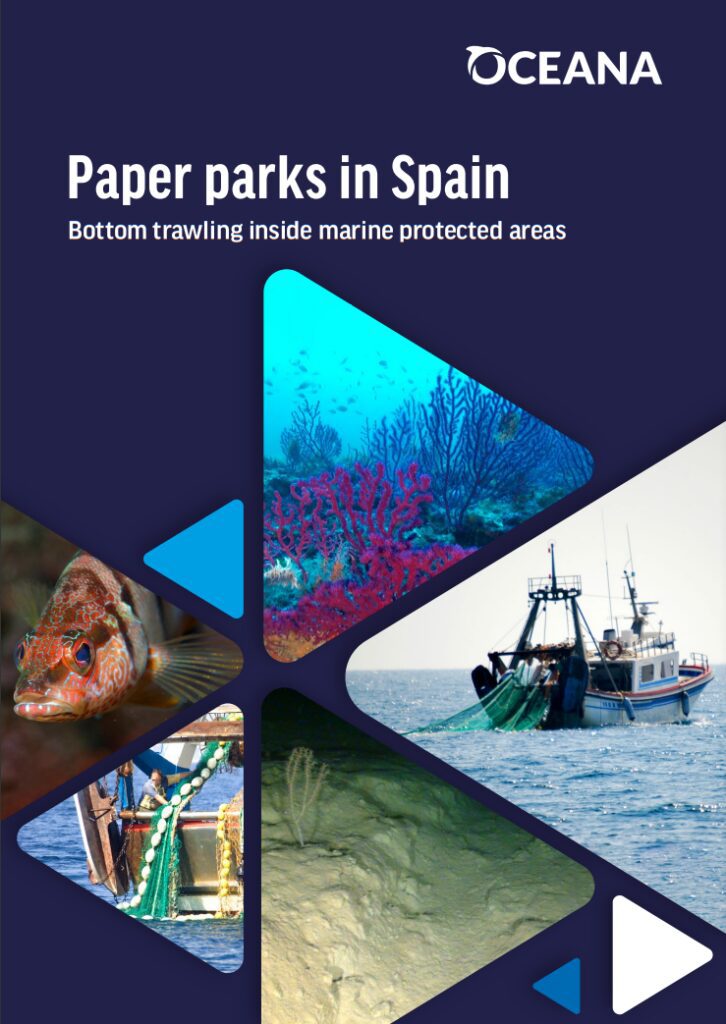Report | December 1, 2021
Paper Parks in Spain – Bottom trawling inside marine protected areas
Summary
Spain has an extensive network of marine protected areas covering more than 13% of its marine surface area. These areas have been designated to protect very rich and varied biodiversity, but their management is inadequate.
In most of these areas, which form part of the Natura 2000 network, the status of the habitats and species to be protected has been assessed as unfavourable. Yet, activities that impact them continue to be carried out even after they were declared protected.
This reveals a problem of management in the network and, therefore, of non-compliance with nature protection regulations, as these require preventing any deterioration of habitats and species that are protected, in favour of their conservation and, if necessary, their restoration.
One of the greatest threats to the integrity of the seabed and its habitats, even within marine protected areas, is bottom-contact fishing, such as bottom trawling and dredging.
To analyse the extent of these activities in the Spanish network of marine protected areas, Oceana has made a detailed analysis of the incidence of high-impact fishing activities on the seabed in Spanish Natura 2000 areas specifically designated for the protection of the seabed and its habitats.
This analysis reveals that at least 21% of these areas are being trawled, including heavily impacted areas, cases of trawling over habitats expressly protected under the Habitats Directive, and evidence of trawling over areas where this activity is restricted and therefore illegal. This report sets out the details of this analysis, its results, a series of case studies, and provides specific recommendations for improving the management of Spanish marine protected areas.
This report is also available in Spanish.


